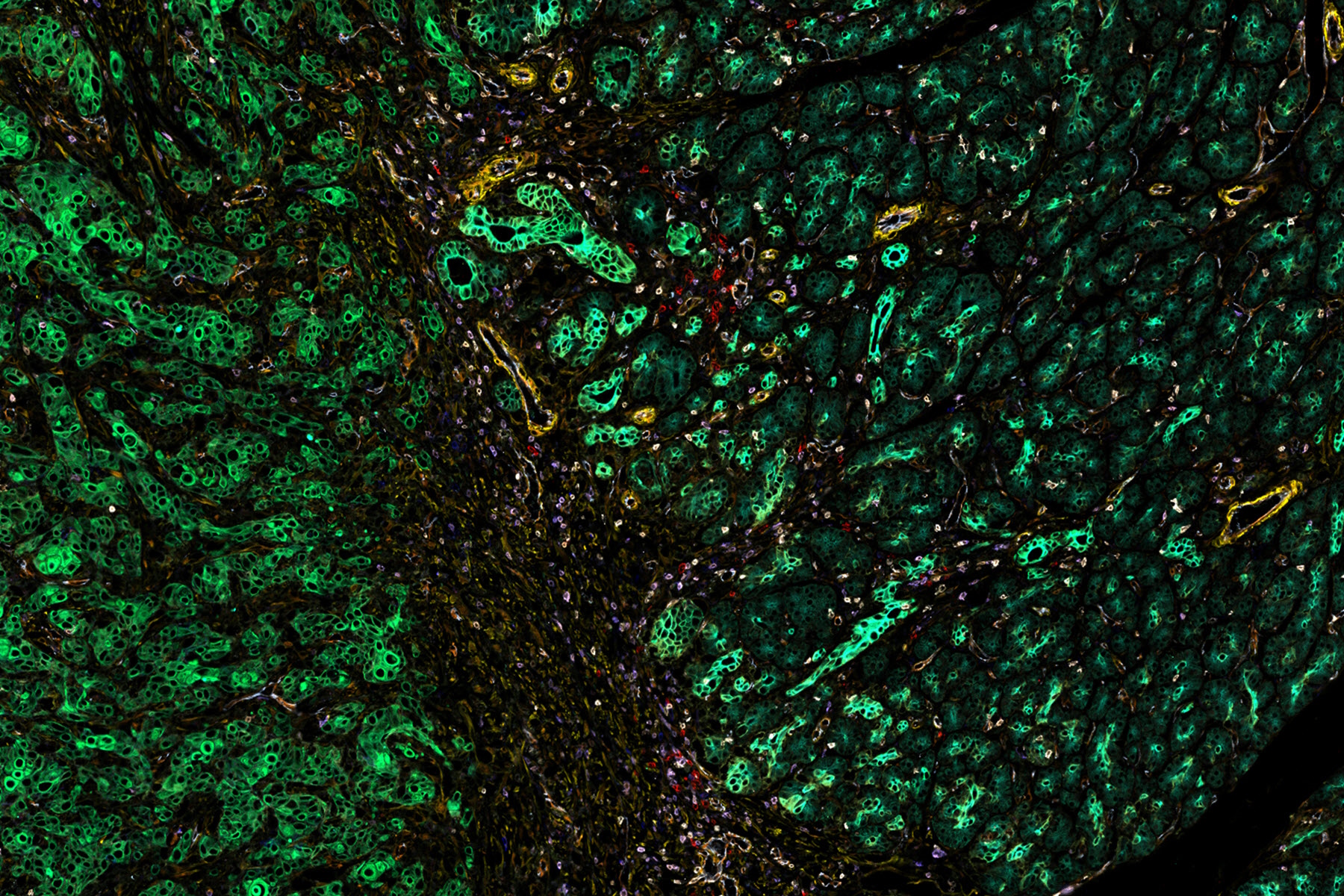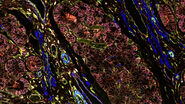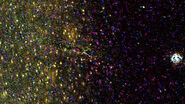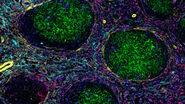Multiplex Imaging in Biomedical Research
This special event, broadcast from Imperial College London, will discuss how multiplex imaging is unveiling the cellular landscape in health and disease.

6 November 2024 | 13:00 London, 14:00 Berlin, 17:00 Dubai
Join us for a special edition of our See the Hidden workshop series. In collaboration with leading experts from Imperial and across the UK, we will explore how multiplex imaging is transforming biomedical research. This exciting symposium will cover areas such as synaptic plasticity, haematopoietic stem cell dynamics, tumour microenvironments, and immune surveillance.
Key learnings:
- The potential of multiplex imaging to study healthy and malignant haematopoiesis in murine and human bone marrow environments
- How multiplex 25 colour immunofluorescence imaging is used to investigate the role of tertiary lymphoid structures for immune surveillance in cutaneous squamous cell carcinoma
- How multiplexed super-resolution single molecule FISH is helping to understand synaptic plasticity
- How to overcome the high multiplexing barrier and access 3D spatial information with at least 15 markers in one pass
Multiplex imaging is offering unparalleled insights into complex cellular environments by allowing researchers to explore tissue architecture, cellular interactions and molecular dynamics with unprecedented precision.
In this online event, broadcast live from Imperial College London, scientists will present their research and discuss how the latest advancements in multiplexing technologies are enabling the visualization of cellular heterogeneity and disease mechanisms at a spatial and molecular level.
Featured technologies:
- Multiplex immunofluorescence imaging
- High-parameter fluorescence microscopy
- Multiplexing through spectral separation in confocal microscopy
Don’t miss this exciting live broadcast or the chance to ask your questions to the experts.




